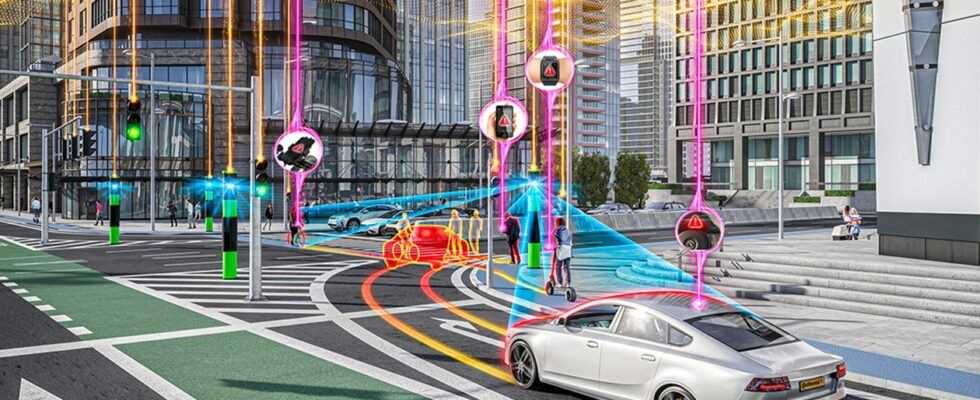Cyber attacks on cars are currently hardly a risk. So far there are only a few highly networked cars, hackers need in-depth specialist knowledge and the criminal business models are missing. But all of that should change soon.
Digital attacks on cars are currently more astonishing than horror. For example, when researchers manage to bring a Tesla to a standstill by remote control or to confuse the camera system of a robo-car prototype with manipulated street signs in such a way that the vehicle completely loses its orientation. It has long been clear that modern cars with their complex electronic architectures and increasingly autonomous computer systems can be manipulated from the outside, even outside of hacking circles.
Jamming is one of the “most popular” cyber attacks
The number of criminal use cases is currently still relatively small. Most notorious is the so-called jamming, in which the radio signals from car keys are intercepted in order to be able to open and steal the vehicle without authorization. The necessary technology is simple, instructions are available on the Darknet, the parts in every hardware store. In the case of trucks, manipulating the digital telematics services is also popular in order to find the vehicles and empty them overnight. In addition, however, digital attacks on cars are difficult. Mainly because the attack would have to take place physically via the USB and OBD ports in the cockpit. But breaking into a vehicle is risky and costly – and as a criminal business model, it doesn’t scale.
Technology development suits hackers
Attacking from a distance, if possible on several vehicles at the same time, is more interesting. And that will be easier in the future: Because more and more new cars have networking technology – they constantly communicate via WiFi or mobile communications with the manufacturer’s cloud, with other vehicles and soon also with traffic lights or traffic signs. The point of attack therefore shifts from the vehicle itself to the level of communication. Experts estimate that around 125 million connected cars will be sold worldwide between 2018 and 2022. So more than enough goals.
At the same time, the technology used by criminals is evolving. Where there is still often a need for personal specialist knowledge today, a simple technical understanding will be sufficient in the future, because the software and hardware for attacks can increasingly easily be ordered on the Darknet. At the same place you can also find information on typical security gaps in various vehicles. Trend Micro’s security experts are already observing this trend. “The discovery of security gaps and vulnerabilities has become easier because many of the attacks have been transferred from theory to practice and then used as weapons and offered for sale,” says the current white paper Connected Cars.
From big robbery to toll fraud
With potential victims and tools, criminals can draw on the full. And when it comes to organizing criminal activities, only creativity sets the limit. The spectrum ranges from consciously turning a car into a dark alley to shutting down the traffic systems of entire city centers. In the first-mentioned case, wallet and watch could become prey, in the second, a ransom extorted from the city treasury makes the hack attractive. Similarly, you could make money if you get access to the manufacturer’s servers and steal customer data. Smaller frauds are also possible: Those who manage to disguise the true electronic identity of their vehicle can, for example, trick the automated payment systems of petrol stations, charging stations or parking garages.
Reactions to the cyber threat
The United Nations has already responded to the new threats. An ordinance of the World Forum for Harmonization lists seven higher-level and 30 subordinate descriptions of vulnerabilities and threats from cyber attacks on which car manufacturers can take countermeasures. Trend Micro experts also have recommendations. In particular, the backend servers of the car manufacturers, which could otherwise be used for attacks on vehicles or for data extraction, have to be secured. In addition, cars would have to be protected against so-called DoS attacks, in which they are bombarded with so many requests and information via their communication channels that the systems collapse – an attack that is also known from the traditional Internet. Last but not least, in the eyes of the experts, protection against attacks via third-party software is necessary. This is, for example, via apps for the infotainment system.
